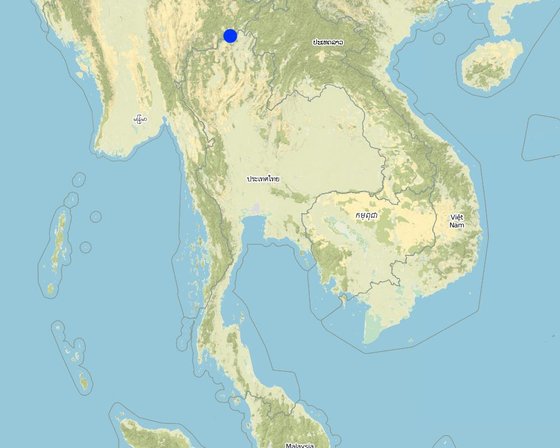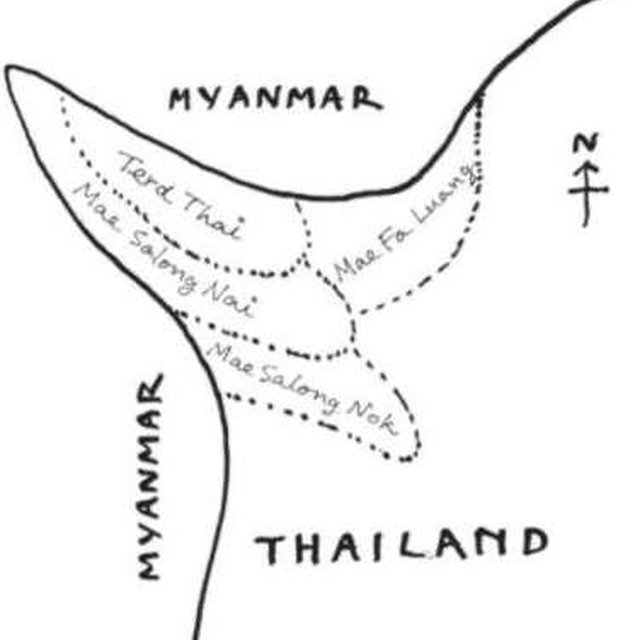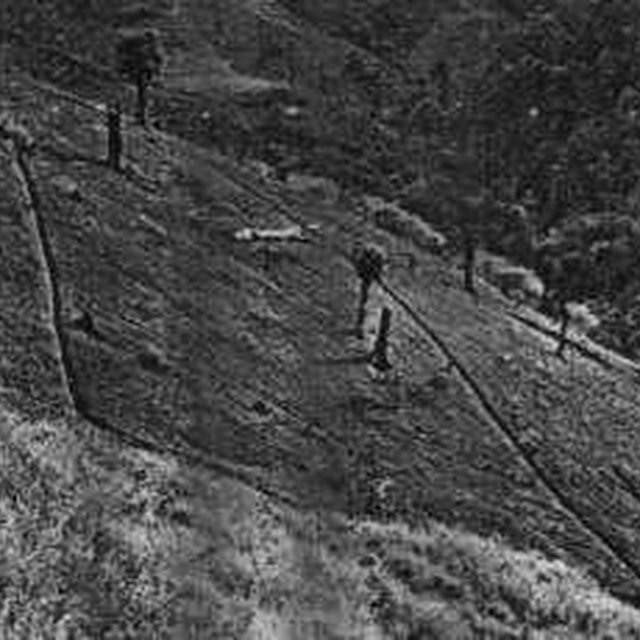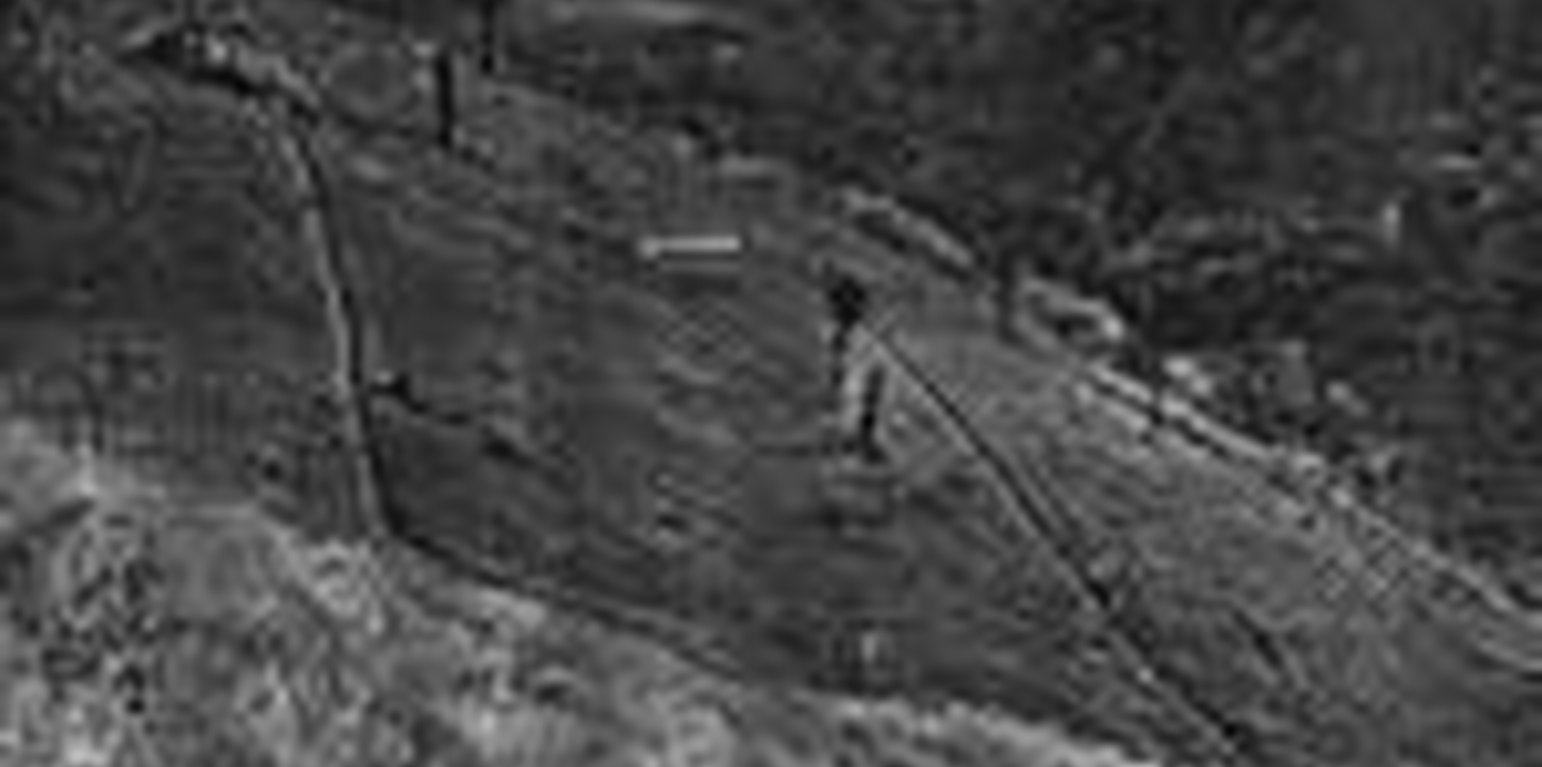Cut-off drain
(Thaïlande)
Description
This approach is the 'way' or 'how' the cut-off drain has been implemented on steepland in northern Thailand.
Aims / objectives: The cut-off drain is a kind of soil conservation measure which functions in the way that excess runoff will gather in these drains, which are constructed parallel with each other, and leave the cropped field without causing damage to it. This cut-off drain will be constructed only on steepland with large acreage. Fields smaller than 0.16 ha will not have it. The digging of the cut-off drain will be done before rainy season, using one hand hoe breadth and 20-30 cm deep. In the following year, loose earth material may be dug up and the drain may eventually be as large as 40 cm wide and 40 cm deep. This is an indigenous practice which farmers do it by themselves in their farm and they are not paid for their wages by any agency. In some cases poorer people may be hired by richer ones to dig cut-off drains. State agencies and extension workers have never promoted this T and A anywhere.
Lieu

Lieu: Amphur Mae Fa Luang, Thaïlande
Géo-référence des sites sélectionnés
Date de démarrage: sans objet
Année de fin de l'Approche: sans objet
Type d'Approche
-
traditionnel/ autochtone
-
initiative/ innovation récente locale
-
fondé sur un projet/ programme

.

Cut-off drains dug to avoid excessive runoff in a field.
Objectifs de l'approche et environnement favorable
Principaux objectifs de l'Approche
The Approach focused on SLM only
1. To drain runoff water, 2. To reduce soil erosion, 3. To stabilize crop yield.
The SLM Approach addressed the following problems: Steepland in the North, where rainfall is high, has been brought to cultivation. There apparently was a sign of excessive runoff from the land, farmers in the past therefore started to dig the ditch to drain water away to the side of the field.
Conditions favorisant la mise en oeuvre de la/(des) Technologie(s) appliquée(s) sous l'Approche
Conditions entravant la mise en oeuvre de la/(des) Technologie(s) appliquée(s) sous l'Approche
-
Connaissances sur la GDT, accès aux supports techniques: The cut-off drain will not be implemented in small fields, e.g. a field < 0.16 ha.
Treatment through the SLM Approach:
Participation et rôles des parties prenantes impliquées dans l'Approche
Parties prenantes impliquées dans l'Approche et rôles
| Quels acteurs/ organismes d'exécution ont été impliqués dans l'Approche? |
Spécifiez les parties prenantes |
Décrivez le rôle des parties prenantes |
| exploitants locaux des terres / communautés locales |
Specific ethnic groups: E-kaw, Lahu, Lisu, Mien, Khin, Thai Yai, Haw Chinese, H'mong |
Farmers do it by themselves. Farmers feel it is necessary to construct the cut-off drain so they will do it inspite of being resource poor if conditions for doing it apply. |
Participation des exploitants locaux des terres/ communautés locales aux différentes phases de l'Approche
aucun
passive
soutien extérieur
interactive
auto-mobilisation
mise en œuvre
responsibility for major steps
Prises de décision pour la sélection de la Technologie de GDT
Les décisions ont été prises par
-
les exploitants des terres seuls (auto-initiative)
-
principalement les exploitants des terres soutenus par des spécialistes de la GDT
-
tous les acteurs concernés dans le cadre d'une approche participative
-
principalement les spécialistes de la GDT, après consultation des exploitants des terres
-
les spécialistes de la GDT seuls
-
les responsables politiques/ dirigeants
Les décisions ont été prises sur la base de
-
l'évaluation de connaissances bien documentées en matière de GDT (prises de décision fondées sur des preuves tangibles)?
-
les résultats de recherches?
-
expériences et opinions personnelles (non documentées)
Soutien technique, renforcement des capacités et gestion des connaissances
Les activités ou services suivants ont fait partie de l'approche
-
Renforcement des capacités/ formation
-
Service de conseils
-
Renforcement des institutions (développement organisationnel)
-
Suivi et évaluation
-
Recherche
Service de conseils
Le service de conseils était fourni
-
dans les champs des exploitants?
-
dans des centres permanents
Name of method used for advisory service: Farmer to farmer; Key elements: Simplicity, Low cost, Functionality
Recherche
La recherche a traité les sujets suivants
-
sociologie
-
économie/ marketing
-
écologie
-
technologie
-
socio-economics, bio-physical
Financement et soutien matériel externe
Budget annuel en dollars US de la composante GDT
-
< 2 000
-
2 000-10 000
-
10 000-100 000
-
100 000-1 000 000
-
> 1 000 000
Precise annual budget: sans objet
Approach costs were met by the following donors: other (Personal fund): 100.0%
Les services ou mesures incitatives suivantes ont été fournis aux exploitants des terres
-
Soutiens financiers/ matériels fournis aux exploitants des terres
-
Subventions pour des intrants spécifiques
-
Crédits
-
Autres incitations ou instruments
Analyses d'impact et conclusions
Impacts de l'Approche
Non
Oui, un peu
Oui, modérément
Oui, beaucoup
Est-ce que l'Approche a aidé les exploitants des terres à mettre en œuvre et entretenir les Technologies de GDT?
Construction of cut-off drains
Did other land users / projects adopt the Approach?
This is considered a way of farming only and may not be regarded as important.
Principale motivation des exploitants des terres pour mettre en oeuvre la GDT
Durabilité des activités de l'Approche
Les exploitants des terres peuvent-ils poursuivre ce qui a été mis en oeuvre par le biais de l'Approche (sans soutien extérieur) ?
Conclusions et enseignements tirés
Points forts: point de vue de l'exploitant des terres
-
Reduce soil loss in large areas grown to field crop
-
Can use as a path in the field
Points forts: point de vue du compilateur ou d'une autre personne-ressource clé
-
Reduce soil loss in large areas grown to field crop (How to sustain/ enhance this strength: Adjust the gradient not to be too steep so the effect from scouring can be decreased)
-
Can use as a path in the field
-
Reduce soil loss in large areas grown to field crop (How to sustain/ enhance this strength: Adjust the gradient to be less steep, to prevent excessive scouring)
-
Can use as a path in the field
Faiblesses/ inconvénients/ risques: point de vue de l'exploitant des terrescomment surmonter
Faiblesses/ inconvénients/ risques: point de vue du compilateur ou d'une autre personne-ressource clécomment surmonter
-
A part of cropped area is lost.
No way
Références
Date de mise en oeuvre: 13 janvier 2009
Dernière mise à jour: 6 juillet 2017
Personnes-ressources
-
Samran Sombatpanit (sombatpanit@yahoo.com) - Spécialiste GDT
-
Philippe Zahner (philippe.zahner@deza.admin.ch) - Spécialiste GDT
Description complète dans la base de données WOCAT
Données de GDT correspondantes
La documentation a été facilitée par
Institution
- Swiss Agency for Development and Cooperation (DEZA / COSUDE / DDC / SDC) - Suisse
- World Association of Soil and Water Conservation (WASWC) - Chine
Projet
Références clés
-
Turkelboom, f. 1999. On-farm diagnosis of steepland erosion in Northern Thailand. PhD thesis. 309 pp.Pongsapich, A. 1998. Indigenous Technical Knowledge for Land Mgmt in Asia. Issues in sustainable land mgmt No. 3. 152 pp.: Katholieke Universiteit Leuven, Leuven, BelgiumIBSRAM, Bangkok
-
Pongsapich, A. 1998. Indigenous Technical Knowledge for Land Mgmt in Asia. Issues in sustainable land mgmt No. 3. 152 pp.: IBSRAM, Bangkok






